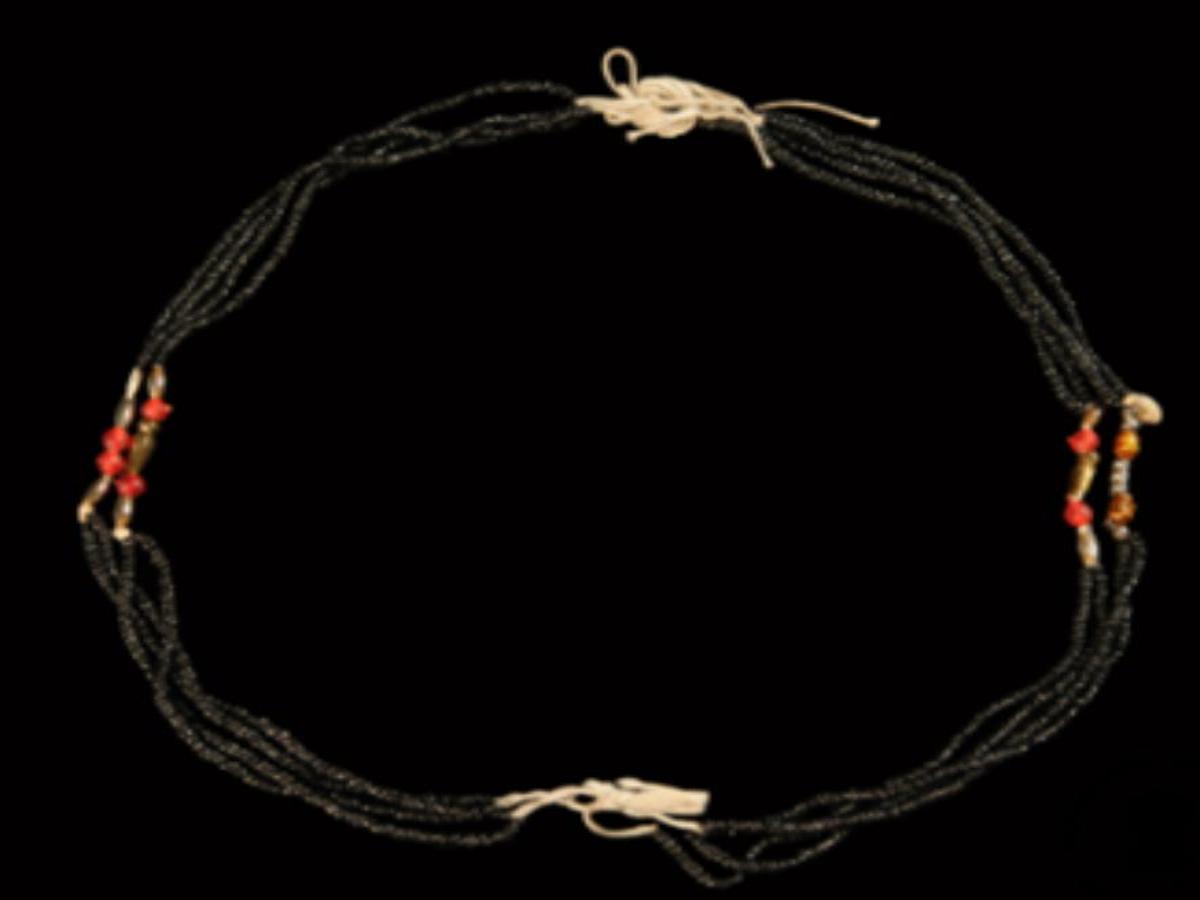State
Tribe Name
Art Type
short description
This four-necklace ensemble handcrafted into entire necklaces from the Gadaba community of Odisha, one of the oldest still living tribes in the state, contributes to the deep archaic cultural richness of the community. Their rites form an important part of the distinction by which the people are identified—ornamentation, the very ornamentation or decoration of the body would make one identifiable.These necklaces consist mainly of black glass beads, which have played a huge part in Gadaba ornamentation. Three of the four necklaces are exclusively designed in the way of having the two red plastic beads placed at the center, perhaps for contrast and symbolic effects. They are all carefully strung into durable cotton threads in a testament to how much available natural materials contribute to the art of capturing a tribe's artistic imagination.
Thumbnail

Filter Postion
Left
Filter Background
Off
Theme
Filter Header Image

content
Image

description
This four-necklace ensemble handcrafted into entire necklaces from the Gadaba community of Odisha, one of the oldest still living tribes in the state, contributes to the deep archaic cultural richness of the community. Their rites form an important part of the distinction by which the people are identified—ornamentation, the very ornamentation or decoration of the body would make one identifiable.These necklaces consist mainly of black glass beads, which have played a huge part in Gadaba ornamentation. Three of the four necklaces are exclusively designed in the way of having the two red plastic beads placed at the center, perhaps for contrast and symbolic effects. They are all carefully strung into durable cotton threads in a testament to how much available natural materials contribute to the art of capturing a tribe's artistic imagination.
Necklaces in Gadaba culture have been worn for purposes more than ornamentation—they usually mark social belonging, marital status, and pride in one's culture: the red beads at the middle may as well signify liveliness or auspiciousness, which often refers to life force and celebration in tribals. These necklaces have now found their resting place in the Indian Museum, Kolkata, depicting the very heritage of Gadaba craftsmanship-simple yet very potent in meaning. Everyday materials, converted into personal and communal expression, have the capability in continuing a tradition across generations.
Necklaces in Gadaba culture have been worn for purposes more than ornamentation—they usually mark social belonging, marital status, and pride in one's culture: the red beads at the middle may as well signify liveliness or auspiciousness, which often refers to life force and celebration in tribals. These necklaces have now found their resting place in the Indian Museum, Kolkata, depicting the very heritage of Gadaba craftsmanship-simple yet very potent in meaning. Everyday materials, converted into personal and communal expression, have the capability in continuing a tradition across generations.
Image Mode
landscape
promoted
On
Verified
Off
